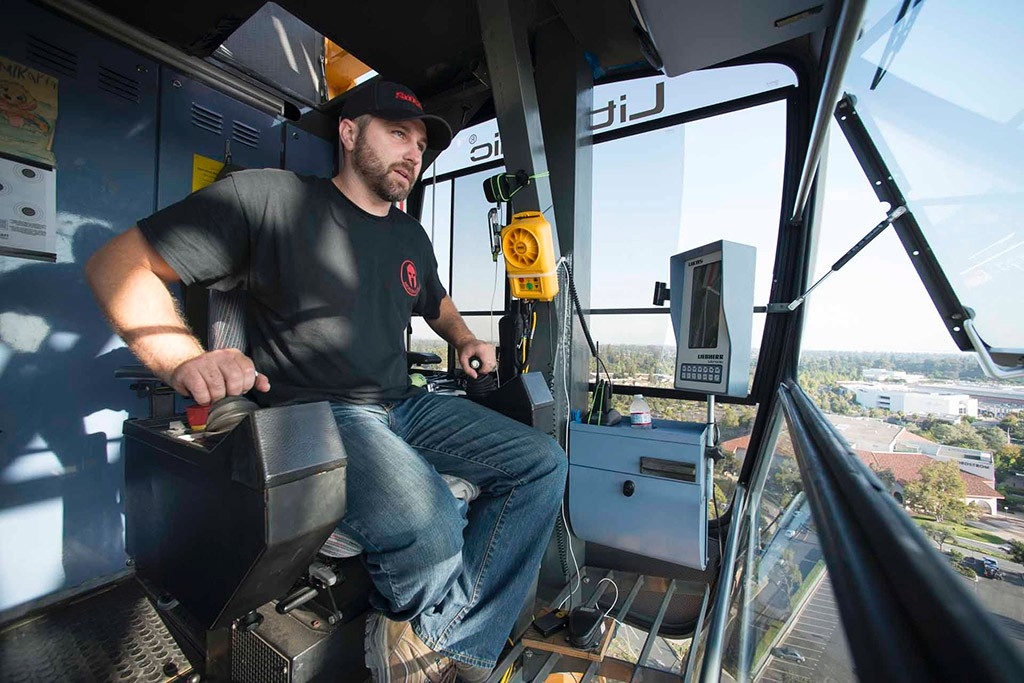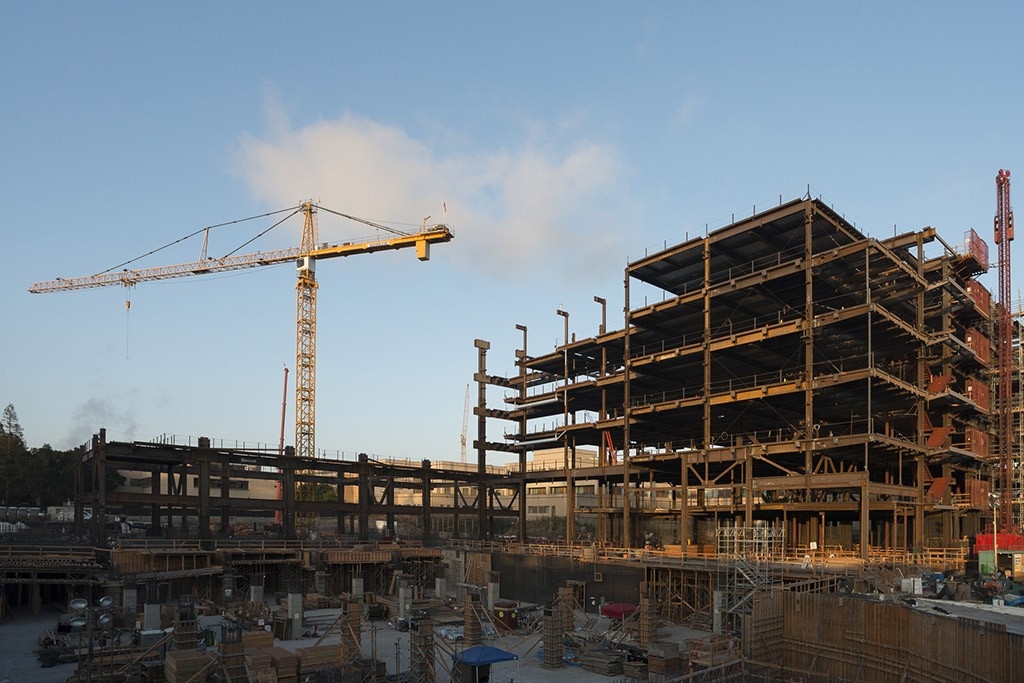What’s going on up there?
A high-rise crane operator on ‘flying iron’

Each workday, A.J. Barker makes a 15-minute climb up 200 feet of steel to the cabin of an enormous yellow tower crane — one of two at the Lucile Packard Children’s Hospital Stanford expansion work site.
He then spends the next eight or nine hours “flying iron,” moving steel girders and beams throughout the construction site and helping assemble the framework of the new center for pediatric and obstetric care.
Sitting almost 16 stories in the air, Barker uses two joysticks to maneuver the crane’s 267-foot working arm, or jib, into position, lowering a hook or coupling into place, coordinating the connection and then moving the object to the desired location — all while keeping an eye on the activity on the ground, other cranes, the direction of the wind, even the arrivals and departures of the hospital’s Life Flight helicopter.
“I have the coolest office view, and it changes all the time,” says Barker, who is working with a subcontractor to DPR Construction, the firm that is overseeing the 521,000-square-foot addition that’s part of the Stanford University Medical Center Renewal Project.
Barker is a second-generation crane operator who learned the ropes by shadowing his father at work. By the time he was 10 he had soaked up the basics. Now, with 13 years of professional experience, Barker is so attuned to the nuances of his equipment that he can maneuver the crane to pick up a five-gallon bucket, adjust its lid and place it on a table. A computer console displays the weight he is carrying, the trolley location, the degree of swing on the hook and the wind speed, though Barker says he uses the computer only for additional reference, focusing his attention more on the crane and load.

“It’s like driving a car,” he says. “Most of it is about feel. It’s a matter of making a connection to the movements of the machine.”
He remains in constant communication with those on the ground through two-way radios, while a direct phone line to the other crane operator prevents any overlaps of loads between the two jibs. Though the jibs are different heights and lengths, the cranes’ loads could infringe on the other’s perimeter without perfect coordination.
“When the job starts, you can see everything. But once the building goes up you lose visibility, and there are a lot of blind spots,” says the 36-year-old father of three. “You have to rely on the guys on the ground to keep everything safe and up to speed.”
The signalmen tell him how heavy a load to expect and where to move the trolley along the jib before he can lower his hooks. While placing gingerbread — smaller I-beams that reinforce the steel framework of the building — Barker responds to a series of nonstop radio instructions:
“Move it up a dog.”
“Left easy. Down easy.”
“Swing left. Up easy.”
“OK, we’re working. Down.”
“There’s no room for error,” says Barker, “when you are flying iron and sending a load weighing thousands of pounds over to guys who are standing five stories high on beams that are 8 inches wide. You have to pay attention at all times.”



